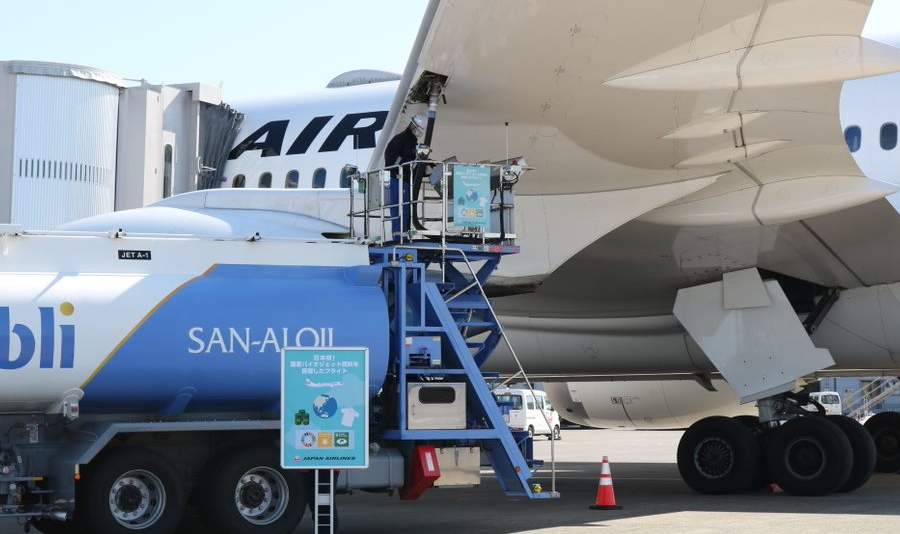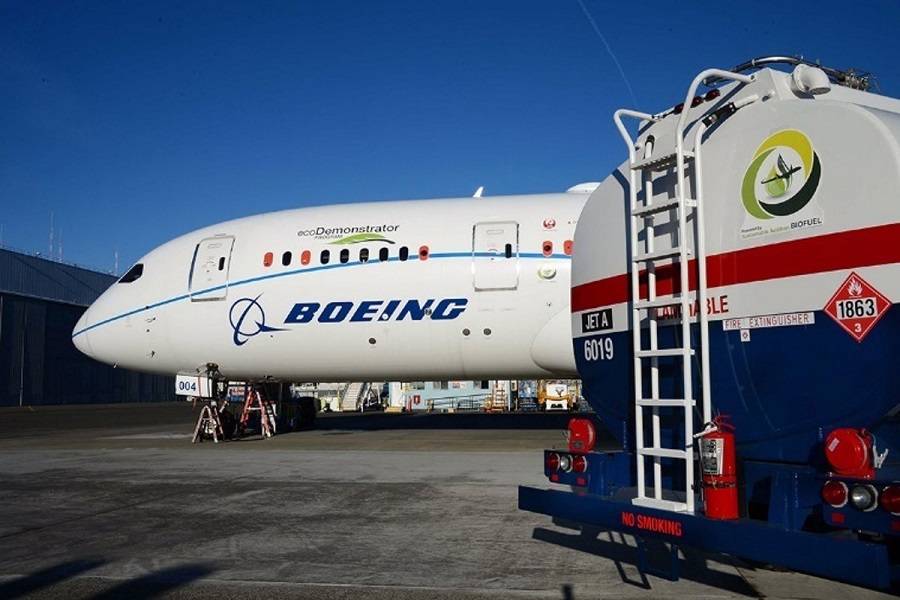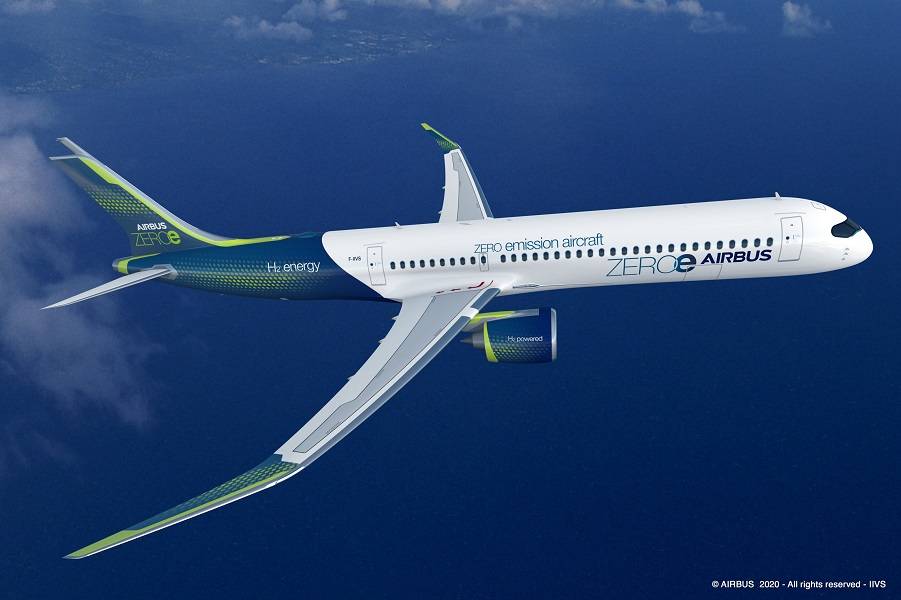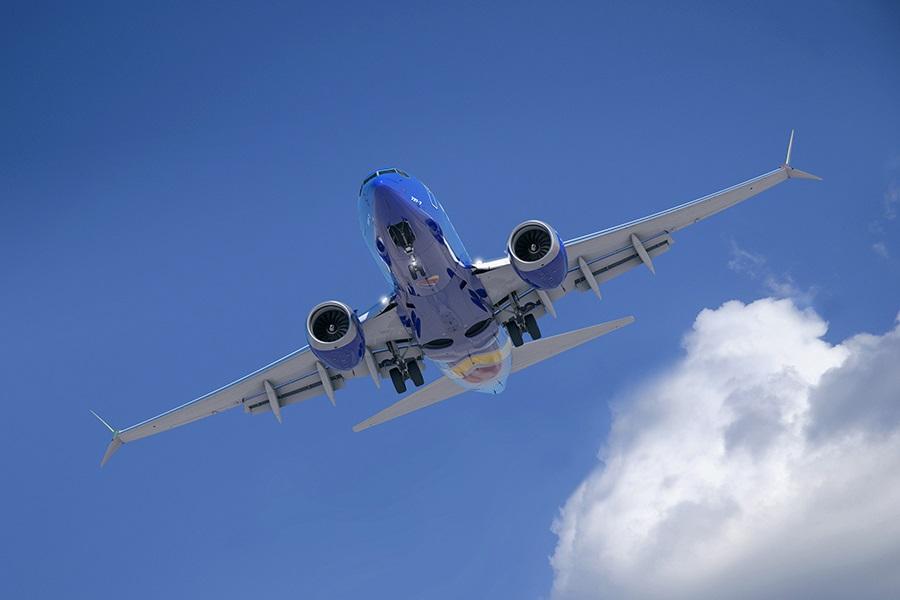Could SAF (sustainable aviation fuels) lead to aviation reducing greenhouse gas emissions by over 100%? Clearly that’s impossible, by definition. Isn’t it?
Obviously if you have a certain amount of something and you dump all of it, you’ve reduced it by 100%. So claiming that you’re reducing it by 165% means that you lost all of it, plus another 65% of it. That you never had. Which is a bit silly. And yet this is what US researchers are claiming. Making SAF (sustainable aviation fuels) from certain waste, would be reducing emissions by 165%. And this is more than fuzzy maths.

This is because the researchers are looking at greenhouse gas emissions from more sources. And they are looking at reducing both carbon emissions that aviation creates, AND emissions from landfills. Specifically, they are looking at wasted food, and animal feedstock. When such waste ends up in landfills, it emits methane gas. Methane is a much more potent greenhouse gas than carbon dioxide. And all landfills around the world are emitting it, every day.
Until now, the problem with processing this waste, to create any sort of fuel, was its water content. And reducing aviation emissions hinges on a way to interrupt this creation of methane gas (CH4). These researchers are doing just that, instead creating volatile fatty acids (VFA). They are then using a catalytic process to turn these acids to two types of paraffin. With further processing, these paraffins can become jet fuel.

Reducing More Than Just Aviation Emissions
These researchers believe that up to 70% of their SAF creation, the remaining 30% being regular jet fuel, can meet criteria for use on airliners. The resulting fuel ends up reducing aviation emissions directly, because it burns cleaner than current fuels. There may be further advantages, from reduced contrails, relating to a reduced amount of soot.
Factoring in the saved emissions of methane, the researchers arrived to the reducing effect in aviation emissions of 165%. And while this definition could be up for some debate, it raises a couple of points that we’ve discussed recently. Only yesterday, we saw that Airbus is still considering SAF to be vital for future long-haul travel. To that end, they flew an A350 with 100% SAF for the first time. Boeing have already done similar tests with a 787.

The problem with SAF, has always been its supply chain. And connected to that, its cost. With estimates that SAF will remain pricier than regular jet fuel, its long-term effect in reducing aviation emissions is problematic. Unless something happens to change its availability, of course. And a new supply of raw materials, from landfills that exist wherever humans concentrate, is quite a promising prospect!
This also raises another, somewhat… philosophical point: Airbus’ ‘true zero Vs net zero’ proxy debate with Boeing. Airbus considers electric and green hydrogen the only ‘true zero emissions’ methods of propulsion. And with electric not being feasible (beyond very small sizes of planes), that leaves hydrogen as the only choice. Airbus describe SAF as a method of getting ‘net zero’ emissions. But what if we have SAF with a net reducing effect in aviation emissions of 165%? Wouldn’t that be better than ‘true zero’ hydrogen?

Making It Happen
Another matter is funding – and with it, the possibility/prospect of government support. Hydrogen is getting a lot of backing in some parts of the world. But creating aviation fuel as a wider ‘societal’ strategy of reducing greenhouse emissions, could be a tempting prospect, for many. If such a strategy could really reach industrialization, it may well see enough backing to overtake hydrogen!

Again, all this depends on the supply chain. Hydrogen has its own problems in this regard, as well as needs for substantial developments in transportation and storage. Some methods for creating synthetic SAF actually create hydrogen as an intermediate step! What we now need, is for the industry to examine the published study. If its effects in reducing aviation emissions are practicable, its effects in aviation could be profound.
Ironically, these effects won’t look anything as profound as hydrogen or electric! This is because the needed changes in aircraft, to run on SAF, are comparatively limited. The research team behind the study aim to conduct test flights with Southwest Airlines, as soon as 2023.



